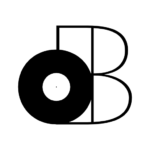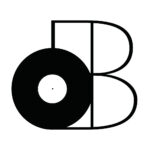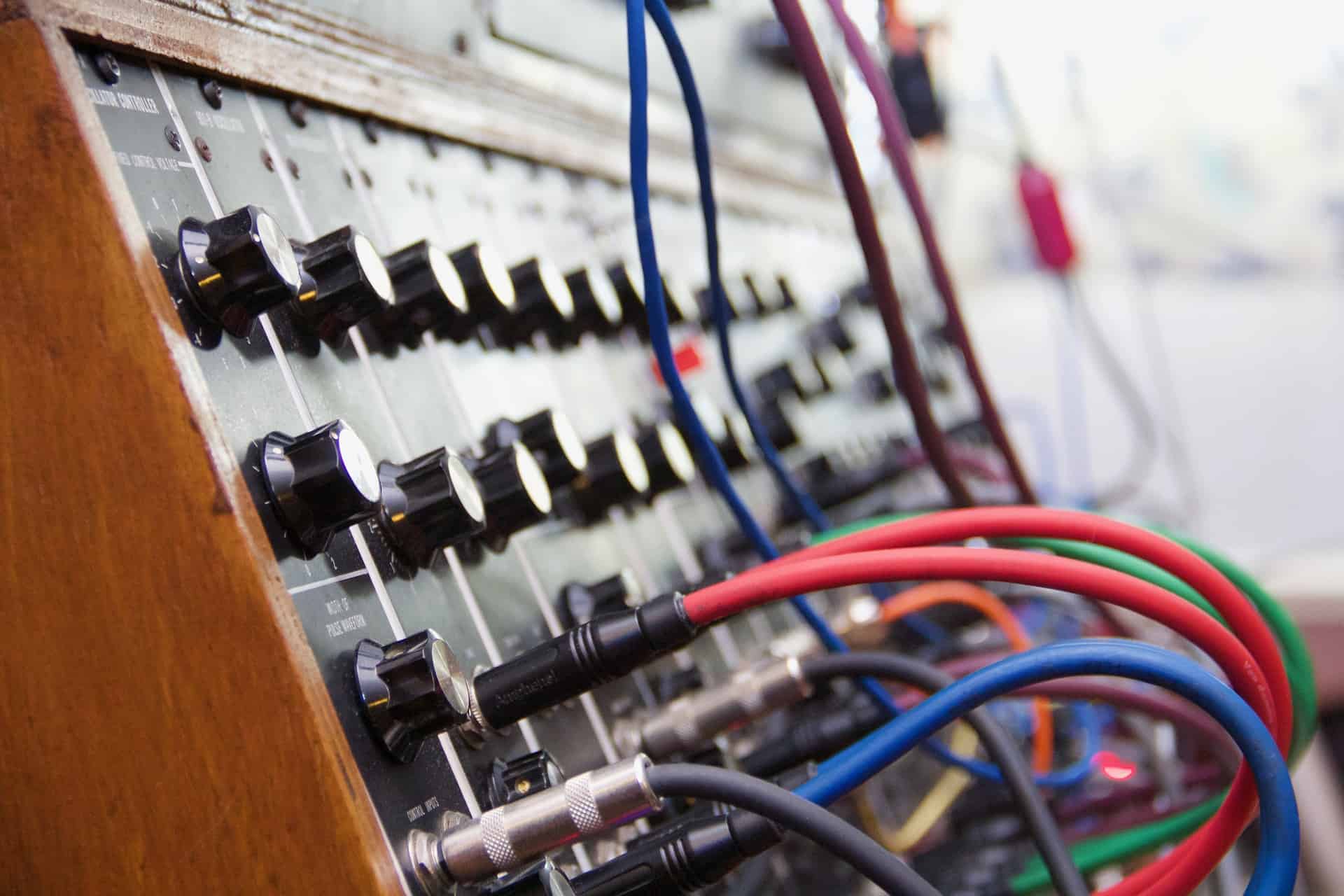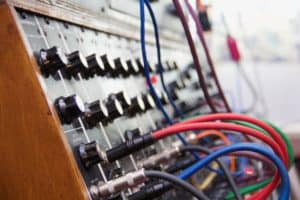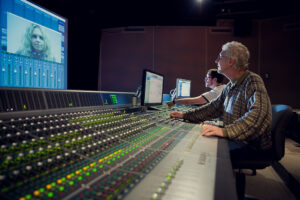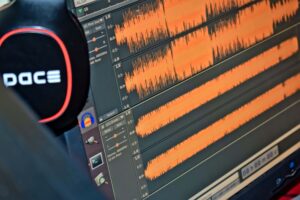Learning how to use a synthesizer can be overwhelming at first. When I first started designing my own sounds, I had difficulty finding my way through the dozens of parameters.
By understanding the 7 main components of a synthesizer, you’ll learn how to sculpt your sound. Each component has a specific role in the sound design process. Once you become familiar with each of these roles, you’ll be on your way to creating sounds you hear in your head.
- The 3 elements of sound
- How to use a synthesizer: Oscillator
- How to use a synthesizer: Amplifier
- How to use a synthesizer: Filter
- How to use a synthesizer: Volume Envelope
- How to use a synthesizer: Filter Envelope
- How to use a synthesizer: Pitch Envelope
- Low-frequency oscillator (LFO)
- Using presets to learn about synthesis
The 3 elements of sound
Before getting into the technical aspect of synthesis, we need to go over some theory. By using a synthesizer, you’ll be working with 3 elements of sound.
They are as follows:
- Pitch | Frequency produced by the oscillator(s)
- Volume | Amplitude produced by the amplifier
- Timbre | Harmonics that make it through the filter
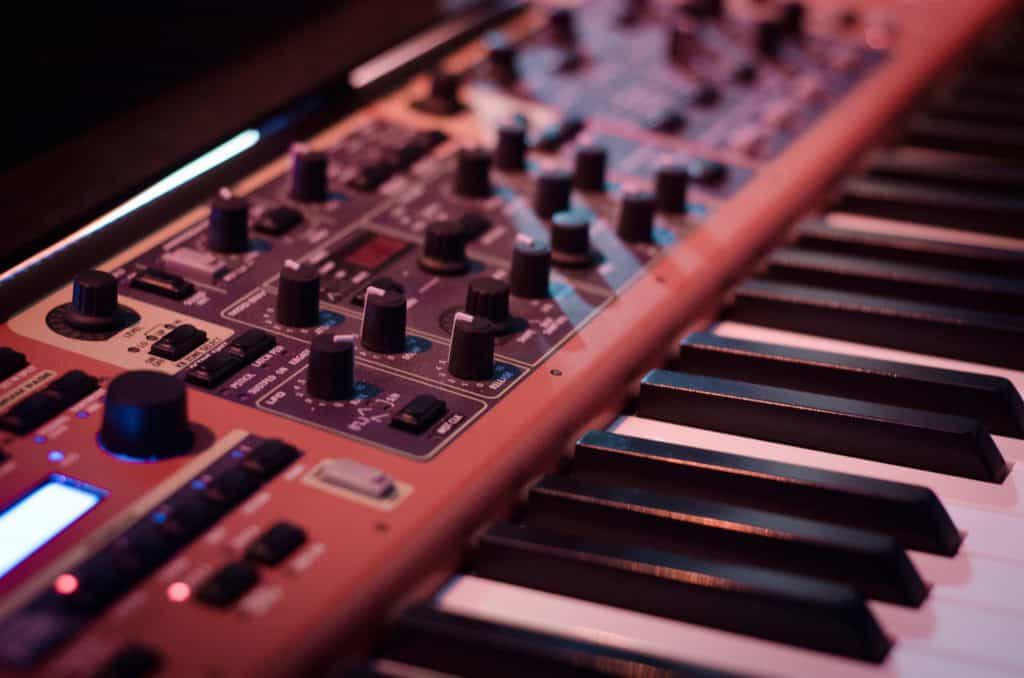
As I mentioned, there are 7 main components to a synthesizer. 3 of these components are dedicated to the elements of sound.
And 3 of the other components are dedicated to shaping these previous components.
The 7th component is actually another oscillator, but it doesn’t quite work like the others.
But in essence, we’re designing sounds by controlling these 3 elements of sound. Once you understand how each component works, you’ll know how to achieve ANY sound.
How to use a synthesizer: Oscillator
The most important component of any synthesizer is its oscillator(s), also referred to as OSC, VCO and/or DCO. If electric guitars use guitar strings to produce sound, then synthesizers use oscillators.
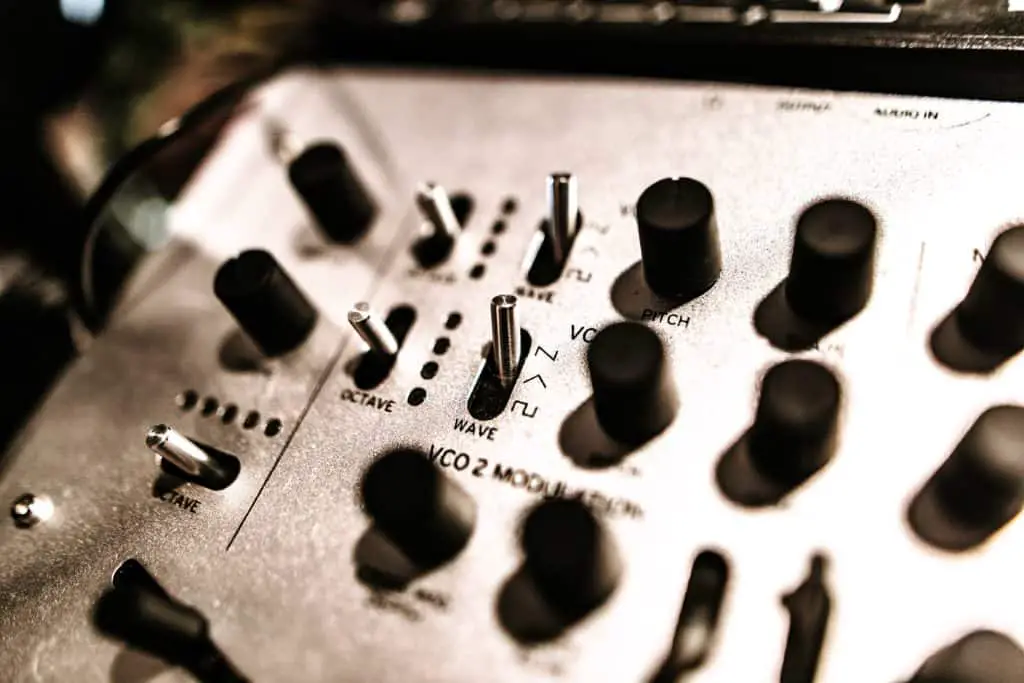
In other words, your synthesizer’s oscillator controls the frequency and the waveform.
Here are the basic waveforms every synthesizer can produce:
- Sine
- Square
- Triangle
- Sawtooth
- Pulse
In essence, these waveforms are often used in combination to design NEW sounds.
That’s right, since most synthesizers possess at least TWO oscillators, they can be mixed together. The possibilities are endless.
The best way to familiarize yourself with each waveform is to hear them on their own. Once you can distinguish them, experiment with different combinations.
You could even tune your oscillators to different frequencies. They are often tuned to the interval of an octave or a 5th and sometimes, just slightly detuned.
You can achieve a myriad of sounds simply by working with the oscillator component on its own.
How to use a synthesizer: Amplifier
Oscillators are not powerful enough on their own to produce audible sound, which is why we have amplifiers (or VCA). Synthesizers have an integrated amplifier specifically designed to get its oscillators to line-level.
It’s pretty simple to understand… You’ll most likely have a master volume and a volume adjustment for each oscillator.
Adjusting the volume of each oscillator will also affect your sound.
In other words, the amplifier is essential for designing balanced sounds. Notice how much your sound changes just by changing the volume of ONE oscillator.
How to use a synthesizer: Filter
Every synthesizer possesses a filter component in some shape or form referred to as the VCF and/or DCF. It allows you to control the harmonic content of your sound OR…
Make it brighter/darker, in other words.
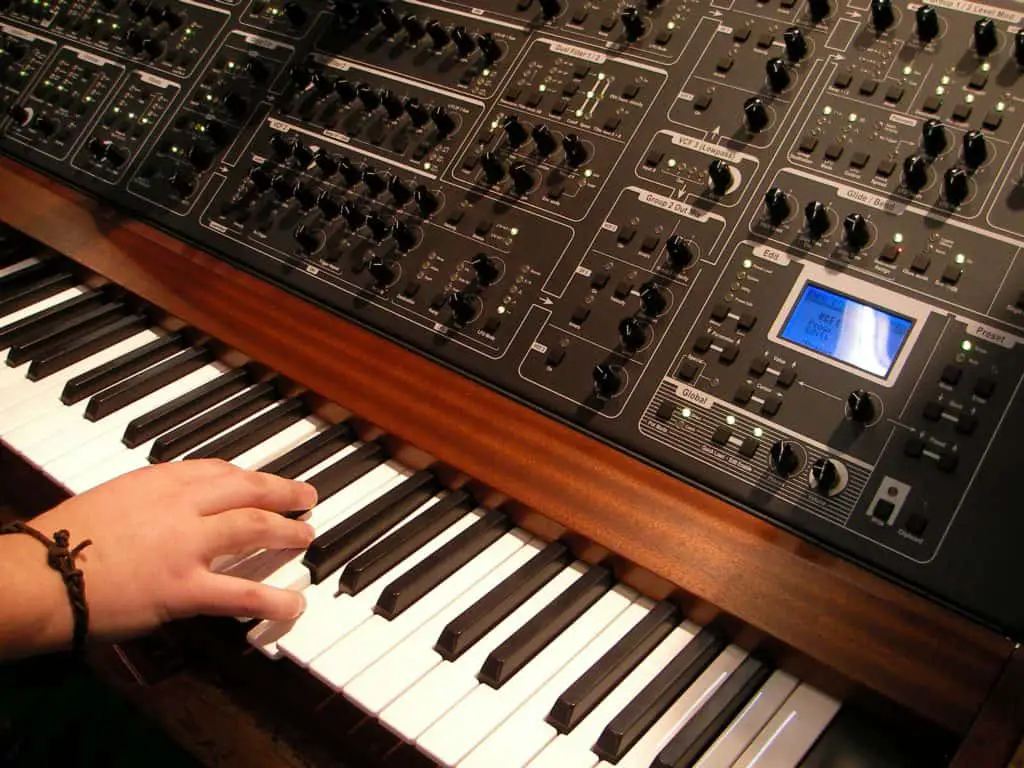
If you’re familiar with how an electric guitar works, it’s very similar to the “tone” knob. The real difference is that we have more precision with a synthesizer.
It will vary from synthesizer to synthesizer, but all have them have a “cutoff” and “resonance” knob. The “cutoff” controls how much harmonics we’re letting through, while the “resonance” adjusts the sound’s resonant frequency.
It’s also common to assign your filter’s “cutoff” to your modulation wheel to use as an effect.
The best way to familiarize yourself with this component is to set your “cutoff” to maximum and leave your resonance at ZERO. This is the neutral position. Now start experimenting, notice how these two elements interact with one another.
How to use a synthesizer: Volume Envelope
The volume envelope is what truly allows us to sculpt a sound’s “shape”. It’s simply a means to reproduce the acoustic properties of a variety of instruments.
We’ll be achieving this by manipulating these 4 parameters:
- Attack | Controls how long it takes for a sound to reach its maximum amplitude
- Decay | Controls how quickly a sound decays to a determined sustain level
- Sustain | Controls the amplitude of a sound’s sustain once it has been triggered
- Release | Controls how quickly a sound fades away after releasing a key
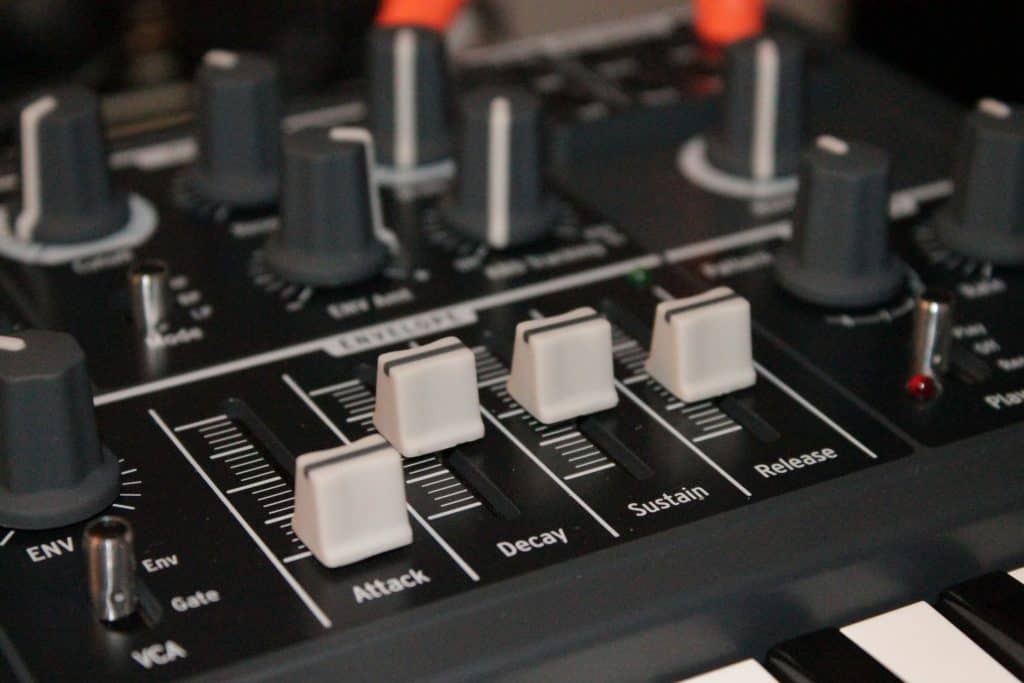
Using a volume envelope, we can create some pretty interesting sounds. We can even use it to synthesize acoustic instruments (as best as we can).
Besides the oscillator(s), I’d say this component is the second most important. If you learn to understand the oscillator(s) and volume envelope… You’ll have your synthesizer mastered in no time.
The best way to become familiar with these parameters is to set them to ZERO. You can then experiment with them individually to see how they affect your sound.
Once you can distinguish them all, try combining them to create some interesting sounds.
How to use a synthesizer: Filter Envelope
The filter envelope is probably the most interesting component of your synthesizer. It will allow you to recreate complex sounds, such as brass instruments.
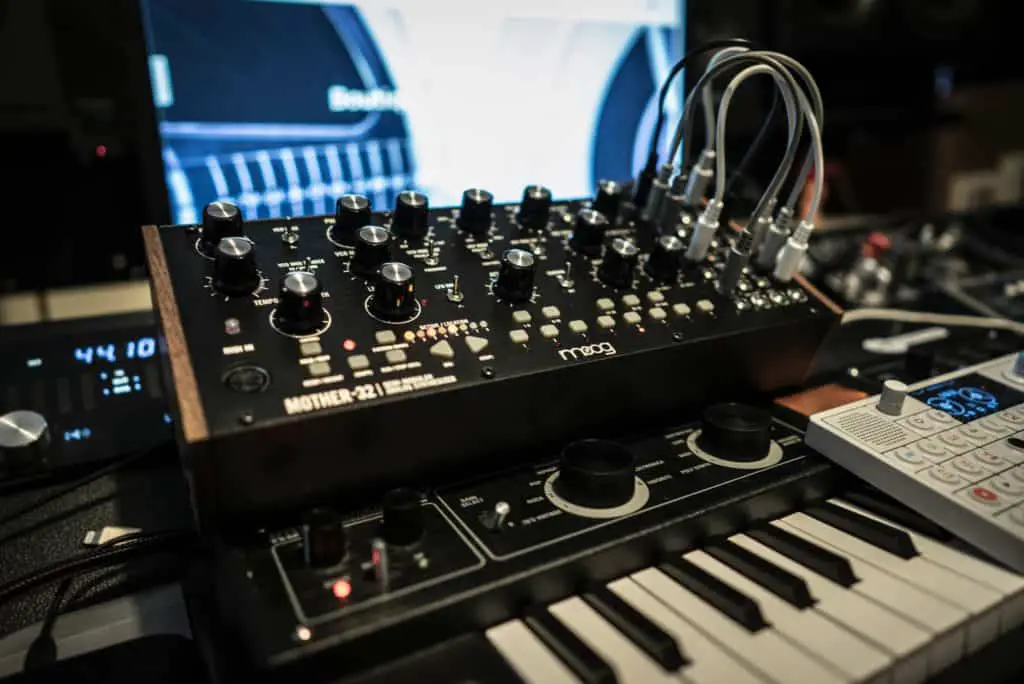
It uses the exact same parameters as the volume envelope, BUT it targets the filter instead of the amplifier.
For example, the attack will determine how long it will take for a sound to reach its maximum brightness. This is essential for synthesizing sounds that sound more “organic”.
Sometimes it can be difficult to distinguish volume envelopes from filter envelopes since they are superimposed.
I found that the best way to hear them apart is to start tweaking one of them. As your sound begins to change, you’ll know which envelope to associate it to.
But in reality, these two envelopes work together to create complex sounds. Think of it like combining two oscillators.
How to use a synthesizer: Pitch Envelope
Your synthesizer should also have a component dedicated to your oscillator(s). Since oscillators control pitch, the pitch envelope affects how they behave.
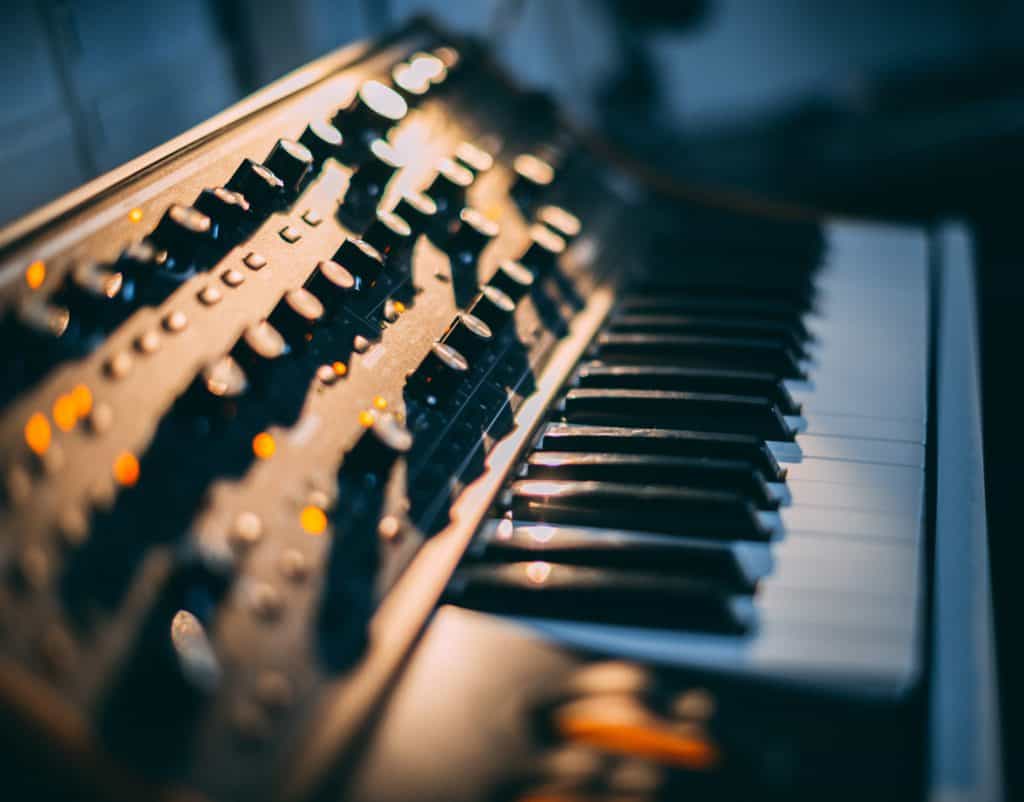
Pitch envelopes vary from synthesizer to synthesizer. For example, you may only have a “portamento” knob to work with and/or a “glide” knob.
In essence, we’re just trying to determine how our oscillator will behave from pitch to pitch.
Think of how a fretless instrument sounds compared to a fretted instrument when it comes to “sliding”. It can be slow and gradual or quick and abrupt.
Learning to use this component effectively can go a long way in making your sounds “life-like”.
Low-frequency oscillator (LFO)
As its name implies, the low-frequency oscillator (LFO) is an oscillator as well. However, its frequency range is much lower than we can hear, but that’s okay.
This oscillator is used to modulate different components of our synthesizer.
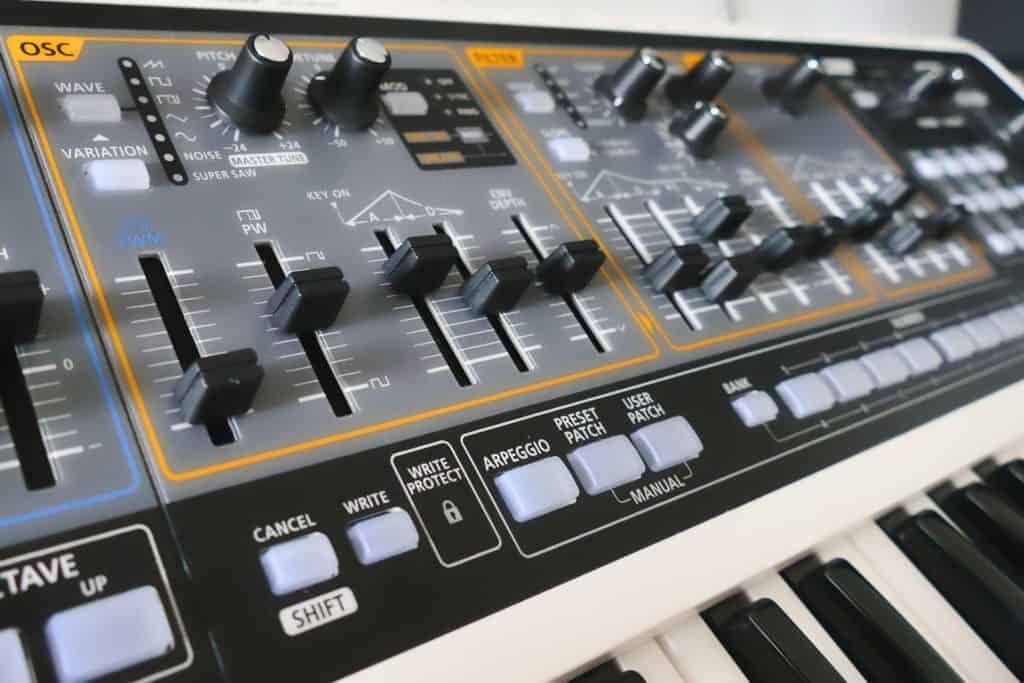
It is usually routed to…
- The oscillator(s)
- The amplifier
- The filter
We can use this oscillator to modulate pitch, which we refer to as vibrato. If we were to use it to modulate volume, it would be called tremolo. By routing it to the filter, we can modulate our sound’s timbre (similar to a wah-wah pedal).
Low-frequency oscillators can get quite complex as they can also produce waveforms.
You’ll be capable of controlling its frequency by using the “rate” knob. Certain synthesizers like the Roland Jupiter-8 also have the option to set a delay time before the LFO kicks in.
Other synthesizers also have the ability to modulate ONE oscillator at a time.
If you thought you had run out of options, then the LFO will surely cheer you up. Once again, the possibilities are endless.
Using presets to learn about synthesis
We now understand a synthesizer’s 7 components, so we’re ready to start designing some sounds. Getting familiarized with your synthesizer’s parameters is only a matter of practice.
The first step is to identify each of your synthesizer’s components.
Each synthesizer is different and there many types of synthesizers out there. However, they will ALL possess components that control the 3 elements of sound.
The best way to learn how to use a synthesizer is actually to “de-construct” factory patches.
You can initialize any preset and simply start tweaking it. You’ll quickly begin to notice how each parameter affects the sound.
Creating sounds from scratch may not be necessary, but knowing how to tweak presets IS.
I recommend sticking to ONE synthesizer at the beginning and to really master it. Each synthesizer is technically capable of the same things… They just have different means to achieve them.
I hope this blog post has given you the courage you need to learn how to use a synthesizer and if it has, please share it with another keyboardist.
Do you have a favourite synthesizer? Let us know in the comments and feel free to share any of your own personal tips.
P.S.: If you’re looking for an affordable portable synthesizer, check out my review on the KORG MicroKORG series.
